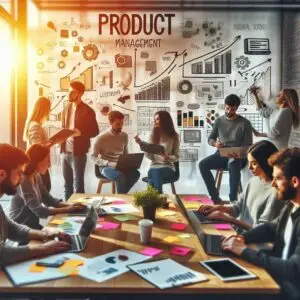Top 5 must know Agile vs Waterfall major differences. Understanding these is necessary for any Product Manager, irrespective of the method you follow.
Agile vs Waterfall is not as common a debate as Scrum vs Kanban. Do check out the following –
So, whether you are a Product Manager, Product Owner, Scrum Master, etc., it is not possible that you would not have wondered about these differences.
Speaking of multiple roles, do you know what makes Elon Musk an exceptional Product Manager?
Nowadays, it is common for people to not know what the waterfall model is, because they have never seen it. Thus, this article is more for people who have recently entered the job market and have never been exposed to the Waterfall model.
By the way, this is also a good time to understand the below –

Generally, these methodologies are independent of the product that you work on. Do you know what it means to be Product Agnostic?
Agile Model
The agile methodology has various flavors that are widely in use in the software industry.
The model consists of iterative development that takes into account continuous feedback.
Consequently, this model is able to delivere with a continuous delivery cycle.
This model is applicable to processes that can withstand frequent changes.
For example, software companies generally rely on this model because software is easy to change.
But, this flexibility does not exist for manufacturing companies. These companies need to rely on the waterfall model.
Let us cover the waterfall model next.
Waterfall Product Management
The waterfall model is defined as a sequential series of steps, wherein the next step is dependent on the completion of the previous step. No changes are permitted in between the process. A new round of iteration can only happen when the first iteration of the product is fully ready.
This model may sound inefficient in software, but it is in wide use in the manufacturing industry.
Imagine a factory making printed circuitboards. The design, development, testing, etc. processes are already set for this manufacturing process. A factory cannot stop the production mid way to incorporate new ideas.

Agile vs Waterfall Comparison Table
The agile vs waterfall comparison table is not a summary of agile vs waterfall pros and cons. Basically, I only go over the definitions of agile methodology and waterfall methodology. Make sure you know the must have skills for a Product Manager.
Before proceeding further, do you completely understand Agile Methodology? If yes, then here are the top 5 Agile vs Waterfall major differences –
| Agile | Waterfall |
| Continuous development | Sequential development |
| Testing happens simultaneously with development | Testing happens only when the development is complete |
| Suited for products where requirements are expected to change during development (which is very common) | Suited for products where requirements are not expected to change during development (which is very rare) |
| Customer satisfaction and constant feedback is at the core of Agile | Does not account for customer feedback, focussed on getting done with the project |
| Agile methodology considers flexibility to be a necessity | Waterfall methodology is very structured and does not value flexibility |
These differences are also applicable to other streams like the difference between agile and waterfall testing. Generally, tools like Jira are independent of your chosen methodology (also check out the top 10 Product Manager tools).

So, no matter which one you choose, you should learn to communicate like a true Product Manager. Not to forget the KISS principle.
Leap of Faith – Agile vs Waterfall
The concept of leap of faith really amplifies the differences between the agile method and the waterfall method.
This leap of faith concept is more applicable to industries where frequent customer or business feedback is expected.
Managing customer feedback is at the core of learning how to influence without authority.
Leap of faith refers to the length of time for which development happens without any customer input.
Let us say your waterfall method takes 2 months to complete. Then, for those 2 months, you do not get any customer feedback.
Your leap of faith in the waterfall example lasts for 2 months.
Now, let us take an agile example where your sprint lasts 1 week. In this agile model, your development only takes place for 1 week without any customer feedback.
Therefore, your leap of faith in the agile model is 1 week.
Thus, in the agile model, there are lesser chances of customer feedback changing during the development phase.
Again, keep in mind that for manufacturing processes, an extended leap of faith is not only practical, but also desirable.

Value Delivered
The concept of “Value Delivered” is very important to understand.
This concept is also a core part of many product management courses. Here is a list of the top 9 product management courses.
Simply put, value is defined as meeting the customer and business needs.
How do you know if the customer requirements changed during your development phase? There is no way to stop that.
You know what they say –
Change is the only constant in life.
So, you can only minimize your customer feedback and optimize your development cycle to deliver maximum value in the least amount of time.
This is a great opportunity to learn the different stages of the product life cycle (with examples).
Conclusion – Agile vs Waterfall
Hopefully, you are now clear about the differences. If you are working agile, remember to not fall into the Waterfall trap while working from home.
Also, always have a strategy in mind. For example, do you know what strategy made Google what it is today? It is the OKR framework – a must know for any Product Manager.
Yes, you may never need to use the Waterfall model, but knowing and understanding it, will only make you appreciate the Agile Model more. Also, being better informed is one of the tricks that Warren Buffett uses to grab opportunities!
Follow me on Twitter for the latest updates.
Do subscribe to my monthly newsletters on how to become a winning Product Manager.



